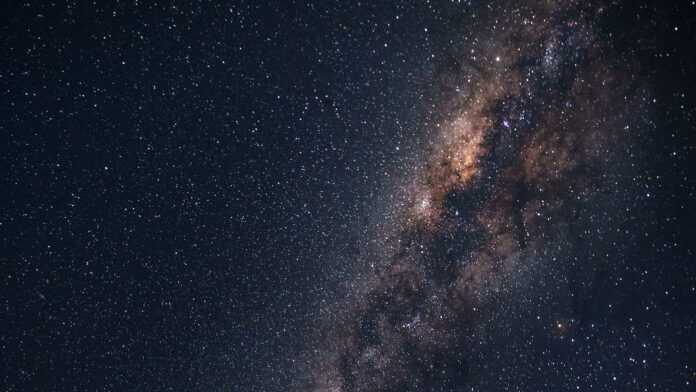After years of planning, an exciting new satellite has been launched to find answers about a mysterious and invisible part of the universe.
We can’t explain the expansion and geometry of the universe with what we know about gravity unless there are huge amounts of energy and mass that we can’t see. Dark energy and dark matter shape the bright universe, but they don’t absorb, reflect, or emit any light. That makes them hard to measure, and there are still a lot of questions about the nature of the dark universe.
In early July, an international team led by the European Space Agency successfully launched the Euclid satellite on a six-year mission to study the dark universe by observing the bright universe. Canadian organizations involved in the mission include the University of Waterloo, the University of British Columbia, the National Research Council of Canada, the Canada France Hawaii Telescope, and the Canadian Space Agency.
The plan is to cover over a third of the sky outside the Milky Way, capturing images of billions of cosmic targets up to 10 billion light years away. It will be the largest and most detailed map of the extragalactic sky ever made. Over the six-year mission, Euclid will also capture the movement of galaxies, allowing researchers to explore how the universe has evolved through cosmic history.
Being in orbit, Euclid will be able to take images at least four times sharper than those we can gather on the ground. Euclid will gather images in the visible spectrum with stunning detail using a 1.2-meter diameter telescope and 600 megapixel camera.
Thanks to redshift (a change in the apparent colour of light depending on how quickly objects are moving away) and the expansion of the universe, the colours of galaxies can give us a good idea of how far away they are. And if we can calculate distances, then we can convert 2D images into a 3D map.
Although Euclid’s images will be remarkably clear, they will essentially be black and white. That’s where a network of international observatories will add missing colour information in the visible spectrum, with several additional filters available on the ground. Canadian researchers will play a major role in collecting these data to close the gap. Euclid will also use a 65 megapixel camera and spectrophotometer to observe near-infrared light using three filters to assist with distance calculations.
But to understand the position and influence of dark matter, the team will also need to lean on gravitational lensing: a phenomenon where matter in front of galaxies distorts their light. Measuring this effect and understanding how galaxies are clustered together will paint a picture of the dark universe.
“Euclid was built to understand the dark universe, but to do that it gathers a huge amount of information about the bright universe,” said Douglas Scott, professor of physics and astronomy at UBC, in a press release.
“That means that even if we make a list of what we expect to learn, there are going to be additional discoveries that weren’t even thought about. To me, that’s the most exciting thing about Euclid.”











































